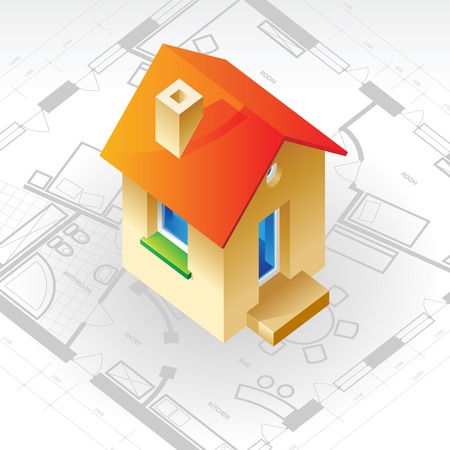1. Introduction to EPC Ratings in the UK
Energy Performance Certificates (EPCs) have become an integral part of the British housing landscape, shaping not only the way we perceive energy efficiency but also influencing market behaviour and policy direction. Introduced as a response to growing environmental concerns and the UK’s commitment to reducing carbon emissions, EPCs provide a clear and standardised assessment of a property’s energy performance. Each certificate rates a building from A (most efficient) to G (least efficient), offering homeowners, landlords, and tenants an accessible guide to potential energy savings and environmental impact. What sets EPCs apart within the UK context is their mandatory status for all homes being sold or let, embedding them deeply into property transactions and everyday conversations about home improvement. Culturally, the British value for tradition blends with a modern awareness of sustainability, making EPC ratings both a practical tool and a symbol of responsible home ownership. As such, EPCs are not merely bureaucratic requirements; they reflect evolving attitudes towards sustainable living and underscore the importance of energy-conscious design in Britain’s iconic housing stock.
2. Sustainable Housing Policies and Regulatory Framework
The United Kingdom has long championed progressive approaches to sustainable housing, weaving environmental responsibility into the very fabric of its national housing agenda. Central to this vision is a robust regulatory framework, underpinned by legislation that not only encourages but also mandates greener, more energy-efficient homes across the country.
Legislative Milestones Shaping Sustainable Housing
Since the early 2000s, a series of pivotal acts and regulations have laid the groundwork for integrating sustainability within UK residential design and construction. The following table summarises key legislative touchpoints influencing sustainable housing policy:
| Legislation/Policy | Year Enacted | Main Focus |
|---|---|---|
| Climate Change Act | 2008 | Legally binding targets to reduce greenhouse gas emissions |
| Energy Performance of Buildings (England and Wales) Regulations | 2012 | Mandates EPCs for property sales and lettings |
| Future Homes Standard (proposed) | 2025 (planned) | Higher energy efficiency standards for new homes |
The Integration of EPC Ratings within Policy
At the heart of these policies lies the Energy Performance Certificate (EPC), a tool designed to visually communicate a propertys energy efficiency. EPC ratings are now integral to both existing and forthcoming legislation, serving as benchmarks for compliance and improvement. The Minimum Energy Efficiency Standards (MEES) require private rented properties in England and Wales to meet at least an EPC band E, with proposals to raise this threshold further in coming years.
EPC Ratings: A Catalyst for Change
The use of EPC ratings extends beyond mere compliance; they inform grant eligibility, underpin green mortgage products, and shape urban regeneration strategies. By embedding EPC requirements into policy, the UK government ensures that sustainability is not an afterthought but a central pillar of housing development and refurbishment.
Towards a Greener Built Environment
This regulatory landscape reflects a holistic approach—where legislative rigour meets design ingenuity—fostering a built environment where energy performance is as valued as architectural beauty. As these frameworks evolve, EPC ratings will continue to act as both compass and catalyst for the UKs journey towards truly sustainable homes.

3. EPC Ratings as a Benchmark for Sustainable Design
Energy Performance Certificate (EPC) ratings have swiftly become a cornerstone in the narrative of sustainable housing design across the UK. For both property developers and homeowners, these ratings act as an authoritative benchmark, guiding architectural vision towards greener, more energy-efficient outcomes. The significance of EPCs extends beyond regulatory compliance; they provide a structured framework for integrating environmental consciousness into every stage of property development.
Shaping Architectural Decisions
At the heart of modern British design thinking lies a growing appreciation for spaces that are not only aesthetically pleasing but also ecologically responsible. EPC ratings play a pivotal role in this evolution by quantifying and publicising a building’s energy efficiency. This encourages architects to prioritise high-performance insulation, advanced glazing systems, and renewable heating solutions. Consequently, the emphasis on achieving superior EPC ratings is fostering a new wave of creativity—where design choices elegantly merge with sustainable technologies to create homes that truly stand the test of time.
Guiding Property Developers
For developers navigating the dynamic landscape of UK property standards, EPC ratings offer much-needed clarity. These benchmarks inform early-stage decisions on materials, orientation, and layout, ensuring sustainability is woven into the fabric of each project from inception. As planning authorities and local councils increasingly champion green credentials, achieving robust EPC scores has become integral to securing planning permissions and attracting conscientious buyers.
Empowering Homeowners
The influence of EPC ratings extends equally to individual homeowners who aspire to upgrade their properties. Whether retrofitting period townhouses or optimising new-builds, the EPC acts as both a diagnostic tool and an inspiration for improvement. It demystifies energy use and highlights practical steps—be it installing smart thermostats or embracing low-carbon heating—that can elevate comfort while reducing bills and environmental impact.
Ultimately, EPC ratings have evolved into far more than a regulatory tick-box; they represent a shared language between designers, developers, and residents, catalysing collective progress towards Britain’s sustainable housing future.
4. Implications for Homeowners and Landlords
Understanding the nuances of EPC (Energy Performance Certificate) ratings is now an essential aspect of property ownership and management in the UK. With sustainability at the forefront of national policy, EPC requirements are shaping the daily realities for homeowners and landlords alike, from how properties are valued to decisions about upgrades and lettings.
Impact on Daily Living
For many British households, an EPC rating is more than a number; it is a marker that influences energy bills, comfort levels, and even lifestyle choices. Homes with higher EPC ratings typically boast better insulation, modern heating systems, and efficient windows—factors that contribute not only to reduced running costs but also to a more pleasant living environment during those chilly British winters.
Property Valuation and Marketability
The UK’s property market has seen a tangible shift as buyers and renters increasingly prioritise energy efficiency. Properties with superior EPC ratings often command higher prices or rents, reflecting both lower anticipated utility bills and alignment with future regulatory standards. Conversely, homes with poor ratings may face devaluation or become less attractive in a competitive market.
| EPC Rating | Potential Impact on Value | Market Appeal |
|---|---|---|
| A-B | Increased value due to high efficiency | High; sought after by eco-conscious buyers/tenants |
| C-D | Stable or moderate increase | Moderate; meets minimum expectations |
| E-F-G | Possible reduction in value; at risk under future regulations | Low; may require investment to let or sell |
The Rental Market: Compliance and Opportunity
Landlords across England, Scotland, Wales, and Northern Ireland must keep abreast of Minimum Energy Efficiency Standards (MEES), which prohibit letting properties below an EPC rating of E. This drives necessary investments in property upgrades but also opens opportunities for landlords who proactively enhance their portfolios. Tenants are increasingly aware of their rights and the benefits of efficient homes—making compliance not just a legal requirement but also a competitive advantage.
Property Upgrades: Navigating the British Context
Improving a property’s EPC rating can range from simple measures such as draught-proofing doors to larger investments like installing air source heat pumps or solar panels—a move supported by various government incentives. These upgrades are particularly significant given the UK’s older housing stock, much of which was built before modern efficiency standards were established. The balance between heritage preservation and sustainability is especially pronounced in conservation areas, where alterations must align with local planning rules.
Navigating Change: A Distinctly British Challenge
For UK homeowners and landlords, adapting to evolving EPC requirements is both a responsibility and an opportunity—to improve comfort, reduce costs, boost property value, and contribute to national climate goals. As Britain continues its journey towards net zero, understanding the role of EPCs remains vital in making informed decisions about property investment and sustainable living.
5. Challenges and Opportunities in the Adoption of EPC Standards
The journey towards embedding EPC (Energy Performance Certificate) standards at the heart of UK sustainable housing is marked by both hurdles and fresh possibilities. As the government intensifies efforts to decarbonise the residential sector, several challenges persist.
Common Obstacles Hindering Widespread Adoption
One of the foremost issues is the upfront cost associated with upgrading older homes, many of which define Britain’s architectural landscape. Retrofitting period properties to achieve higher EPC ratings often requires significant investment, which can be off-putting for homeowners and landlords alike. Furthermore, there is a pervasive lack of awareness about what an EPC rating truly represents, leading to apathy or confusion during property transactions.
Regional Disparities: A Patchwork of Progress
The UK’s varied geography reveals pronounced regional disparities in EPC adoption. Urban areas, especially in London and the South East, benefit from greater access to green finance and government incentives. Conversely, rural communities—characterised by ageing stock and less robust infrastructure—struggle to keep pace. This divide is further accentuated by differences in local authority support and public engagement with energy efficiency initiatives.
Innovative Opportunities on the Horizon
Despite these obstacles, the EPC framework has spurred innovation within the housing sector. Emerging technologies such as smart meters, intelligent heating controls, and eco-friendly insulation materials are making it easier for homeowners to boost their property’s energy performance. Additionally, creative financing models—including green mortgages and local authority-backed grants—are helping bridge the affordability gap. The growing demand for sustainable living is also inspiring architects and designers to reimagine space, blending heritage aesthetics with modern efficiency standards. As such, EPC ratings serve not only as regulatory benchmarks but as catalysts for design-led transformation across Britain’s diverse housing landscape.
6. Future Prospects and Policy Recommendations
Anticipating Regulatory Evolutions
The UK’s commitment to a net-zero carbon future necessitates an evolving regulatory landscape for EPC ratings. As sustainability standards grow more rigorous, policy frameworks must reflect both the urgency of climate goals and the nuanced diversity of Britain’s housing stock. Emerging discussions in Westminster suggest that EPC benchmarks could soon become more sophisticated, integrating real-time energy performance data and considering whole-life carbon assessments. There is also growing momentum behind policies that reward homeowners and developers for exceeding minimum EPC thresholds, providing a tangible incentive for deeper green investment.
Design Innovation: Elevating Standards
Future-forward design thinking can transform the role of EPC ratings from a compliance metric into a catalyst for creative, sustainable living spaces. British architecture stands at the intersection of heritage and innovation; leveraging this duality, new-builds and retrofits alike can harmonise energy efficiency with aesthetic value. Smart home technologies, passive design principles, and the integration of locally sourced materials should be foregrounded in housing design briefs. By making EPC improvement synonymous with aspirational living—think bespoke insulation solutions or solar-integrated rooflines—the industry can inspire homeowners to view energy performance as part of their property’s character and beauty.
Actionable Policy Recommendations
1. Dynamic EPC Frameworks
Update the EPC methodology to better reflect seasonal energy use, occupancy patterns, and technological advancements. This creates a more accurate picture of real-world performance, reducing loopholes and ensuring trust in the system.
2. Financial Incentives
Expand green finance schemes—such as low-interest retrofit loans, stamp duty rebates, or council tax reductions—for properties achieving higher EPC bands. This would lower barriers to entry for both private landlords and owner-occupiers.
3. Education & Awareness Campaigns
Invest in public engagement initiatives that demystify EPCs and promote energy literacy across communities. Workshops, digital guides, and local partnerships can empower residents to make informed decisions about upgrading their homes.
4. Design-led Pilot Projects
Support demonstration projects that showcase best-in-class sustainable refurbishments or new builds with exceptional EPC ratings. These living case studies can shift cultural perceptions by blending British spatial sensibility with cutting-edge green technology.
Towards a Greener Housing Landscape
The future of British housing will be shaped by how effectively EPC ratings are embedded within broader sustainability narratives—from regulation and design to financial incentives and cultural change. By embracing innovation and bold policy evolution, the UK has an opportunity not only to decarbonise its homes but also to set a global standard in sustainable space-making rooted in local identity.


